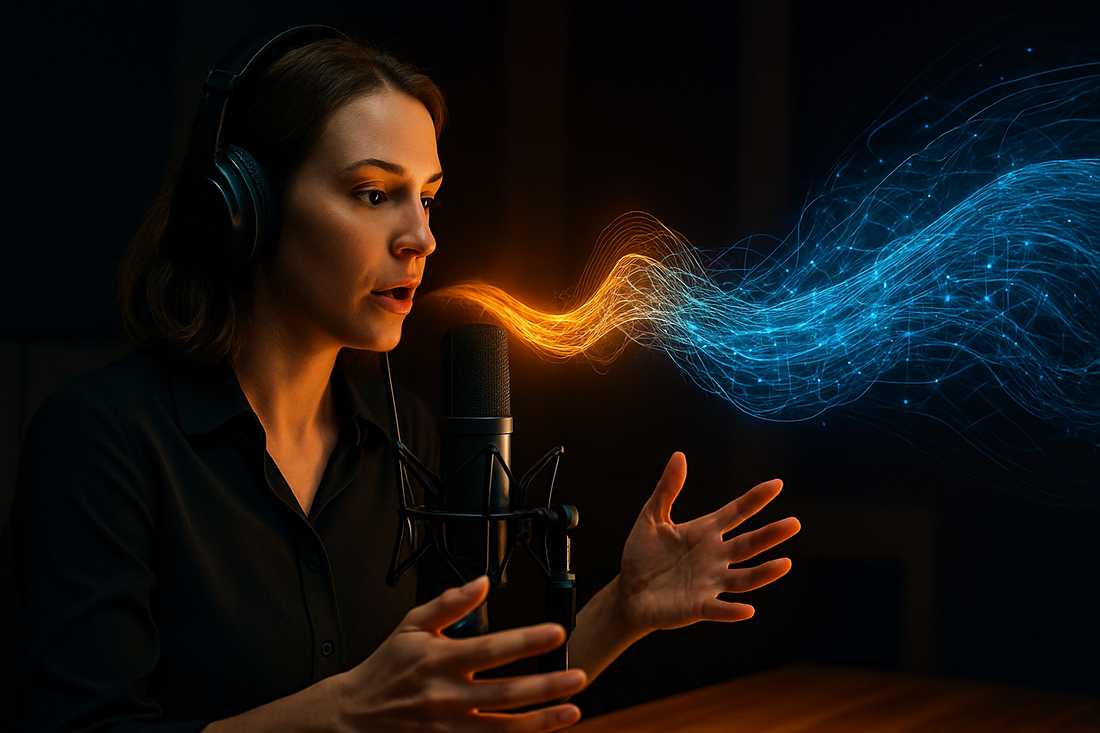
The Audition Is Over: Why AI Isn't Killing Voice Acting, It's Revolutionising It!
In the fast-paced world of digital media, a contrarian narrative is gaining traction: the impending obsolescence of the human voice-over artist. The discourse is often sensational, dominated by headlines proclaiming that artificial intelligence (AI) has mastered the art of speech, rendering human talent redundant. While it is true that AI-generated voices have become astonishingly sophisticated, to believe this technology marks the end of professional voice work is a profound misunderstanding of the industry's evolution. Rather than a death knell, AI represents a pivotal shift, a new paradigm where the most successful artists are not those who resist the change, but those who strategically embrace it.
The domain where AI undeniably excels is in tasks that require consistency, speed, and affordability over nuanced emotional depth. For many low-stakes applications, the efficiency of AI is simply unparalleled. Consider corporate training modules, e-learning platforms, public service announcements, and automated phone systems. These are fields where the core requirement is clear, consistent information delivery. A professional voice artist can take hours to record and edit a script, and any subsequent changes necessitate a return to the studio. An AI voice, once trained, can generate a flawless script in minutes and instantly accommodate revisions, all at a fraction of the cost. This is the reality of the market, and to pretend otherwise is to ignore the undeniable economic pressures faced by many clients.
However, this is where the conversation becomes more academic and a deeper analysis is required. The human voice is not merely a tool for delivering information; it is a complex instrument of communication and connection. It conveys subtle emotions, subtext, and lived experience that a machine, no matter how advanced, cannot yet replicate. A human artist can interpret a character, infusing a dramatic pause with tension, a sigh with genuine sorrow, or a laugh with authentic joy. These are not just sounds; they are narrative tools. In high-stakes creative projects—such as video game characters, film trailers, animated series, or emotionally charged audiobooks—the absence of this human element is not just noticeable; it is a creative deficit. The audience expects a soul behind the voice, a connection that goes beyond perfect pronunciation and cadence.
This distinction is precisely why the future is not about replacement, but about symbiosis. The most forward-thinking voice artists are not viewing AI as a competitor but as a suite of powerful tools. By offloading monotonous, low-value work to AI, they free themselves to focus on the truly creative, high-value projects that demand their unique human touch. This shift allows them to be more selective, more artistic, and ultimately, more valuable.
To thrive in this new landscape, a voice artist must become a hybrid professional, leveraging AI to enhance their workflow and expand their opportunities. Several tools and platforms are emerging to facilitate this collaborative model. For instance, platforms like ElevenLabs and Murf AI enable voice artists to create a "digital voice clone" of their own voice. This is not about being replaced; it is about monetising their voice in a new way. They can licence their AI voice model to companies for use in e-learning or corporate narration, generating passive income while they dedicate their time to more fulfilling, creative work. It is a new revenue stream, not a replacement for their primary artistry.
Beyond voice cloning, AI is also revolutionising the production pipeline. Tools like Adobe Podcast and Descript use AI to automatically remove filler words ("ums" and "ahs"), eliminate background noise, and even transcribe audio, allowing artists to significantly reduce their post-production time. Imagine completing a recording session and having a perfectly clean, transcribed file ready for a final quality check in minutes, not hours. Furthermore, services such as Wondercraft can take a script and quickly generate multiple versions with different emotional tones, allowing the artist to rapidly experiment with delivery styles before committing to a final recording.
In conclusion, the narrative of AI replacing voice artists is an oversimplification. The reality is far more complex and optimistic for those willing to adapt. The industry is not facing a collapse, but a restructuring. Mundane tasks will be automated, but the demand for authentic, emotionally resonant storytelling will only grow. The voice artist of tomorrow will be a professional who understands that their greatest asset is not their ability to speak, but their ability to connect—and that AI, far from being a threat, can be the most powerful ally in amplifying that uniquely human ability.
